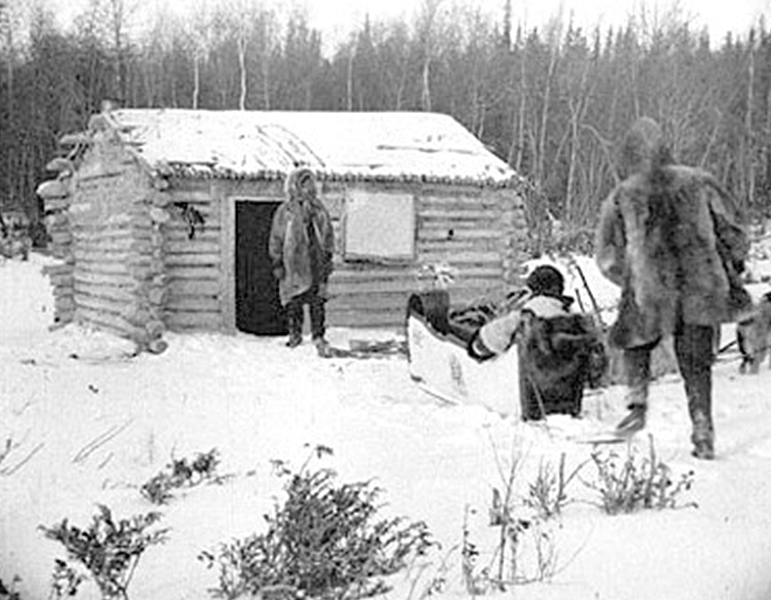David and William Kennedy opened the door to their shanty, and confronted a plague of mice eating in the pantry, chewing through boxes of supplies, nesting in the bedding.
The brothers were pioneers of Saugeen Township in Bruce County. In the spring of 1851, David, 23, and William, 25, built a scow and floated their possessions down the Saugeen to a farm plot 12 miles from the river mouth. Their struggle to make a home by the Saugeen is told in David’s book Pioneer Days.
By mid-April, the Kennedys had built a shanty. Their one-room log cabin was 13 feet square, with an elm bark roof and a floor of basswood slabs. In a clearing, the brothers raised potatoes and corn. When their food ran out, they had to go for supplies, which meant an eight-mile walk to Southampton.
That summer they had spent a month helping their father in Guelph with the haying. Now returned to their shanty, the Kennedy brothers faced a major headache. Although they had hung from the rafters all the bedding and perishable goods, the mice had made a nursery in the bedding, and chewed up everything that came their way. They were everywhere.
“We found it impossible to keep our eatables in any place that they would not get them, except in our round iron bake kettle with close-fitting lid,” David wrote. “Wooden boxes were of no use, for they would gnaw through them in quick time, and now that we had returned with plenty of fresh supplies in the way of provisions and seed wheat, their numbers seemed to increase tenfold.”
The relentless rodents were so daring that “if we left the table a moment to fetch the tea or coffee pot from the hearth, whenever our backs were turned, they would come and snatch our ham or bread from our plate and ran away with it in a moment. When we were in bed and asleep at night, we would often be awakened by mice pulling at our hair and cutting our bed covers in order to get the cotton wadding, or our hair, to make themselves nests.”
They tried one solution – a strong, heavy box, hung from the wall, with close-fitting door and shelves to hold bread, butter, sugar, tea and coffee. The next morning, they opened the cupboard door to see about a dozen mice jump out, and, instead of provisions, a large mouse nest, made of cedar bark and all the paper torn from the grocery parcels. The tea, sugar, coffee, pepper and mustard were all mixed in a dirty heap on top of the butter plate.
At their wit’s end, the brothers resolved to get a cat, so William went hunting in Southampton. A friend offered an “ugly old tom cat” on loan, warning that it was “rather treacherous and a notoriously bad thief,” and actually, William needn’t bother returning it.
William took the cat, hoping for deliverance from the murine tyranny. Instead, the cat ignored the mice and relied entirely upon sponging and stealing for a living.
One day the cat was left inside as usual to watch the mice while the brothers went out to work. When they returned for dinner and opened the shanty door out scooted the cat… it had knocked down a flat-iron that hung on a nail on the wall, and it fell on top of the large bake kettle and broke the cover in pieces. Plus, the cat had eaten the dinner in the kettle.
What to do? They decided to drown the cat, but the cat begged to differ, and after a struggle headed for the woods, never to be seen again.
The Kennedy’s shanty adventures fill a 135-page book, Pioneer Days at Guelph and the County of Bruce. You can get a copy of David’s 1903 book at Bruce County bookstores, the Bruce County Museum and the Bruce County Historical Society, brucecountyhistory.on.ca.



